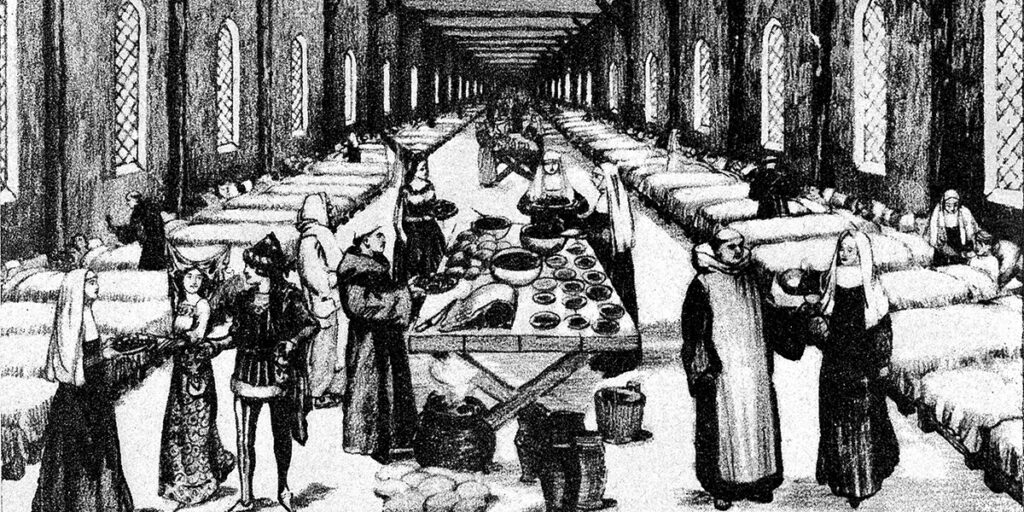
Hospitals are often seen as beacons of hope and healing, providing refuge to those in need of medical care. But have you ever noticed that many hospitals bear the names of saints? This practice is deeply rooted in history, reflecting a long-standing connection between faith and healthcare.
This article delves into the fascinating world of why are hospitals named after saints, exploring the historical context, the significance of saintly patronage, and modern examples of this enduring tradition. We’ll journey through time to understand how these revered figures became associated with healing and compassion, ultimately shaping the landscape of healthcare as we know it.
History of Hospitals Named After Saints
The practice of naming hospitals after saints has its origins in the early Christian era. As Christianity spread throughout Europe, monasteries and convents often took on the role of providing care for the sick and poor. These institutions, driven by religious devotion and a sense of social responsibility, became precursors to modern hospitals.
During the Middle Ages, the Church played a central role in healthcare, establishing numerous hospitals dedicated to specific saints. These hospitals were not merely places of medical treatment but also centers of spiritual guidance and community support. The names of these saints, often associated with healing miracles or acts of charity, became synonymous with the hospitals themselves.
Saints and Healing Traditions

Throughout history, many saints have been venerated for their association with healing and compassion. Some, like Saint Cosmas and Damian, were physicians who dedicated their lives to serving the sick and poor. Others, such as Saint Roch, were believed to possess miraculous powers to cure diseases. These figures became patron saints of various medical professions and illnesses, further solidifying the link between faith and healthcare.
The veneration of these saints often involved pilgrimages to their shrines, where people sought healing and spiritual solace. Hospitals named after these saints became destinations for those seeking both physical and spiritual restoration. The belief in divine intervention through saintly intercession played a significant role in shaping attitudes towards illness and healing during this period.
Patronage of Hospitals by Saints
The concept of saintly patronage extended beyond individual hospitals to encompass entire medical fields. For example, Saint Luke is the patron saint of physicians and surgeons, while Saint Raphael is associated with healing and protection. These associations were often reflected in the naming conventions of hospitals, with institutions dedicated to specific specialties or medical conditions bearing the names of relevant saints.
The patronage of saints provided a sense of spiritual guidance and protection for both patients and healthcare providers. Hospitals named after these figures became symbols of hope and faith, offering comfort and reassurance during times of illness and vulnerability.
Significance of Naming Hospitals After Saints

Naming hospitals after saints carries profound symbolic meaning. It acknowledges the historical role of religion in healthcare and honors the legacy of individuals who dedicated their lives to serving the sick and suffering. These names serve as reminders of the enduring connection between faith and healing, reflecting a belief that compassion and divine intervention can play a vital role in restoring health and well-being.
Furthermore, these names often evoke a sense of tradition, history, and community. They connect modern healthcare institutions to their roots, reminding us of the long-standing commitment to providing care for those in need. The use of saintly names also adds a layer of humanization to hospitals, making them feel more welcoming and less intimidating for patients.
Modern Examples of Saint-Named Hospitals
The tradition of naming hospitals after saints continues today, with numerous examples worldwide. Some notable examples include:
- St. Jude Children’s Research Hospital in Memphis, Tennessee, dedicated to the treatment and research of childhood cancers and other life-threatening diseases.
- St. Vincent’s Medical Center in Bridgeport, Connecticut, a comprehensive healthcare system serving the needs of the community.
- St. Mary’s Hospital in Rochester, Minnesota, known for its expertise in cardiology and oncology.
These hospitals, along with countless others bearing saintly names, demonstrate the enduring legacy of this tradition and its continued relevance in modern healthcare.
Conclusion
The practice of naming hospitals after saints is a testament to the historical intertwining of faith and healthcare. From early Christian monasteries to modern medical institutions, these names reflect a deep-rooted belief in the power of compassion, healing miracles, and divine intervention. While the role of religion in healthcare has evolved over time, the symbolic significance of saintly names endures, reminding us of the enduring human need for hope, comfort, and spiritual guidance during times of illness and vulnerability.
